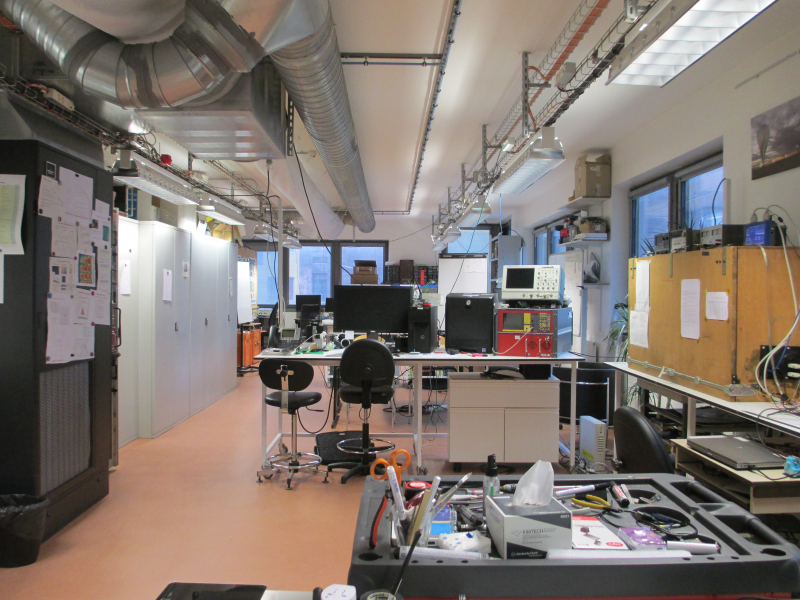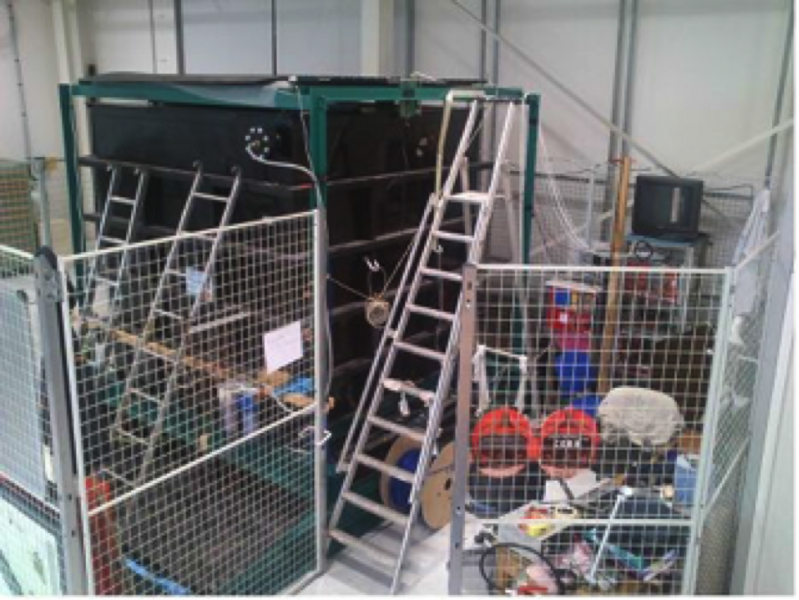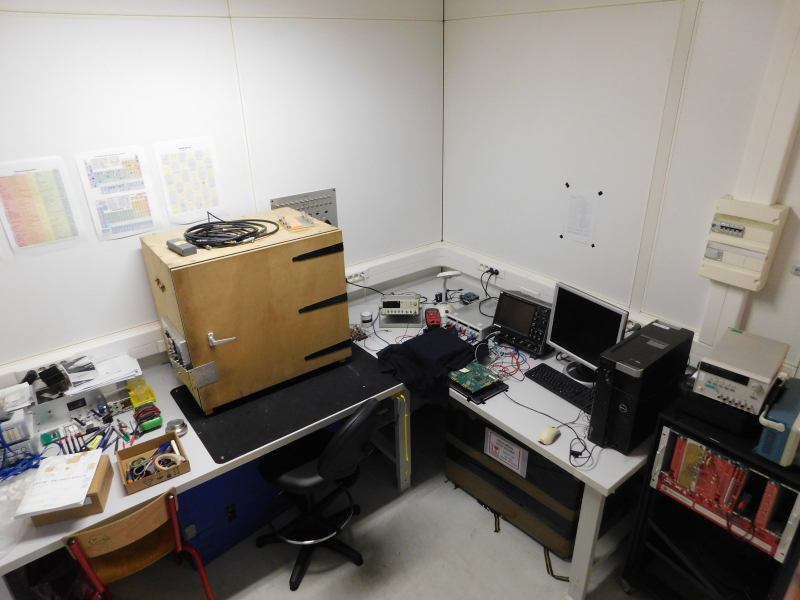 |
|
 |
 |
Photodetection laboratory
Photodetection is omnipresent in astroparticle physics and high-energy astrophysics, in the frame of cosmics rays, neutrinos and X/Gamma telescopes. The Photodetection laboratory of APC gathers skills in the development, the use, the characterization and the calibration of photodetectors. Its main activities concern the prototyping and the assembly, integration, validation and tests (AIVT) of photodetectors (photomultipliers tubes, MAPMT, SiPM, etc.). The photodetection laboratory is a transverse facility created to ensure the evolution of the skills and the synergy in the field at APC, for a wide spectrum of application: the photodetection laboratory played a key role in the past to enable APC, with a high reactivity, to take related workpackages in SIMBOL-X, TARANIS, KM3NeT, JEM-EUSO, DUNE…
Main equipment
The current projects of the laboratory in 2022 are DUNE, KM3NeT and JEM-EUSO. These projects are carried out with specific equipment available at APC:- PMT, MAPMT, SiPM, APD, PIN photodiodes, …
- Black Boxes, calibrated light sources (calibrated photodiode + integrating sphere + pinhole), optical fibers, motorized micro linear stages, spectrometers…
- CAEN modules, dedicated ASIC & FPGA, high definition scopes,
- Organic & inorganic scintillators,
- Radioactive sources for X/Gamma spectrometer calibrations
The photodetection laboratory has collaborations with Hamamatsu Japan, especially in the frame of characterization and the improvements of new MAPMT prototypes.
The lab is also involved in different R&T programs funded by CNES for the development of high TRL Gamma spectrometers based on Silicon photomultipliers, notably AstroSiPM (heritage of the X-ray and gamma-ray detectors of TARANIS).
Scientific responsible: Thomas Patzak
Technical responsible: Guillaume Prévôt
